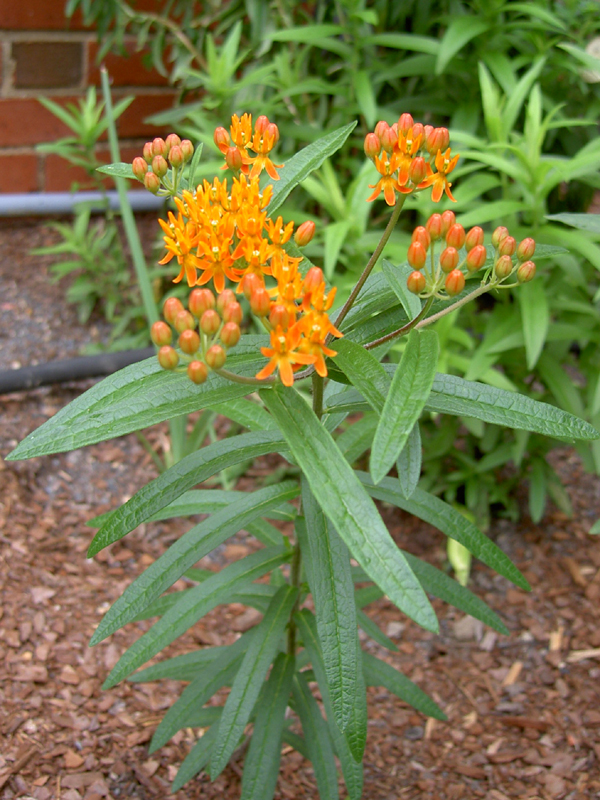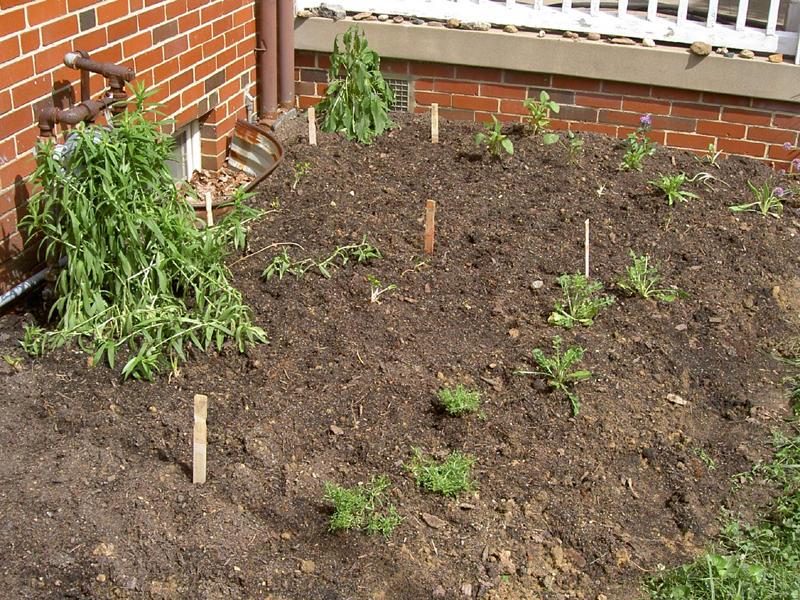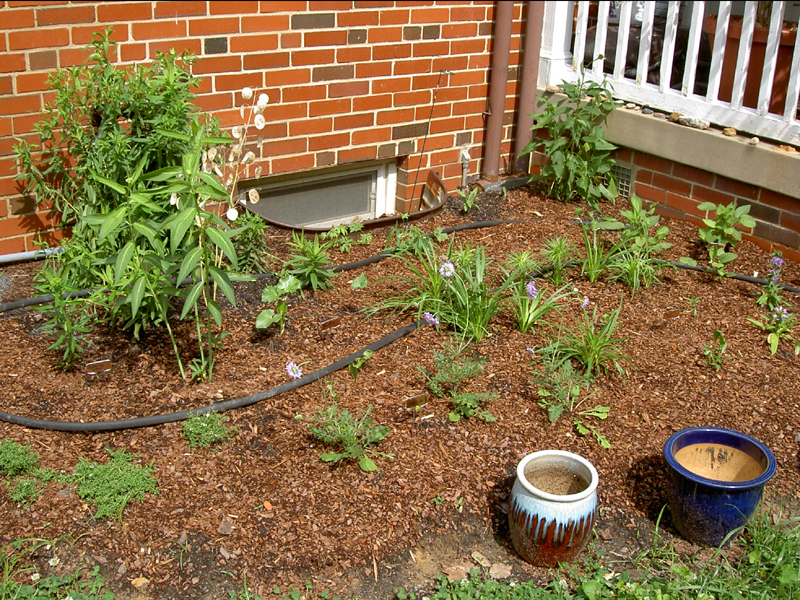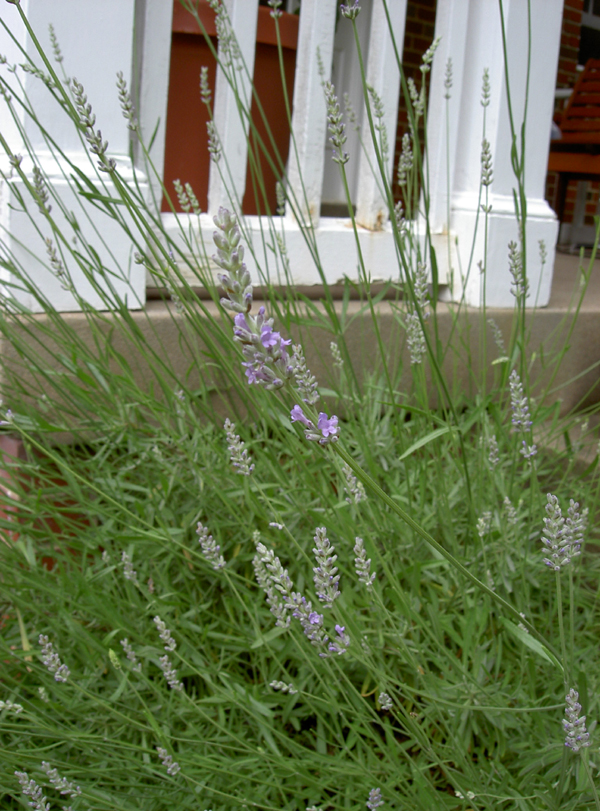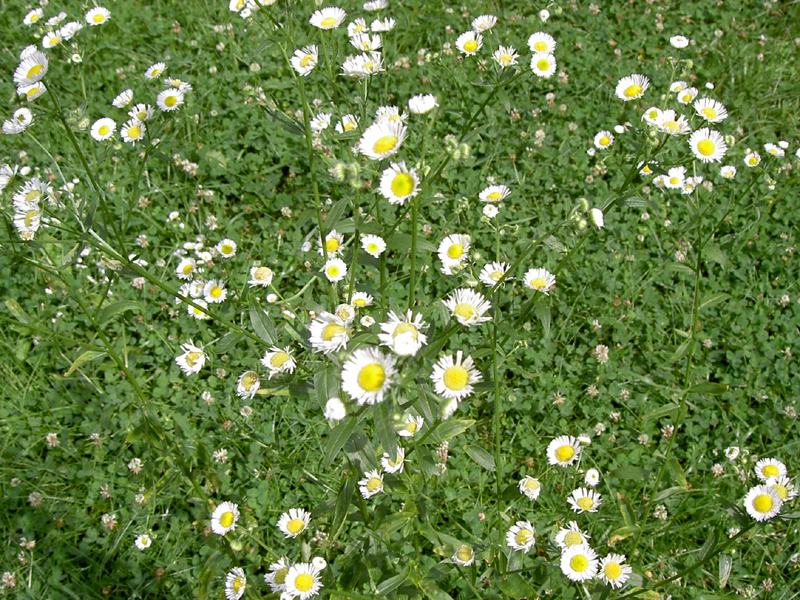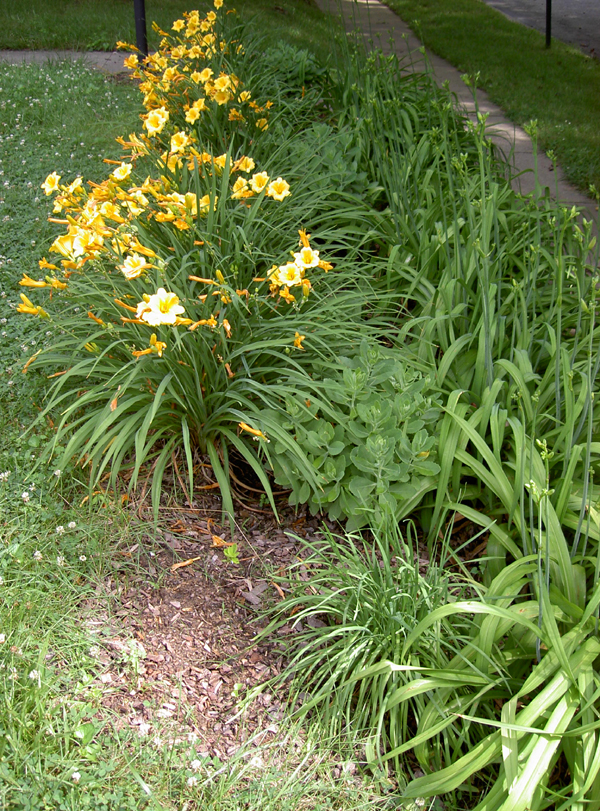This autumn found us with a number of refugee plants on our porch that required a permanent spot in the yard. The sad demise of the hydrangea and the clethra twigs at the end of the summer left some space open, and we expanded the planted areas to include spaces in front of and under the azaleas near the house.
There were two main categories of plants: those moved from our neighbor’s yard as she thinned the plants she’d acquired with the house, and those I couldn’t resist bringing home from the autumn plant swap I organized in town. In the first category, I had pink and red mums and a bag of mixed daffodil and jonquil bulbs, the latter of which had spent the summer under the bench on the front porch, a storage method I don’t recommend but which resulted in only a handful of rotten bulbs. The pink mums went in front of the white azalea on the right side of the porch (as you face the house); not that they bloom at the same time of year, but I like to spread the pink around. For a person who really is not a fan of pink, I’m acquiring quite the variety of pink flowers in my garden. The daffodil bulbs I planted under the smaller of the pink azaleas on the left side of the house, under the sassafras. There’s quite a nice patch of ground there, now that the liriope and ivy has been beaten back, and if the daffodils do bloom, they’ll be easily visible from the street. I am not entirely confident that they’ll get enough sun, but they’re easy enough to move (and they certainly weren’t going to bloom from a bag on the porch!).
The last refugee from a friend was a small sage, which I also planted on the right side of the steps. It will probably grow into the space currently occupied by the spring bulbs, which is fine; I’ll move them as needed and it will be nice to have an herb there rather than the bare patch we get when the bulbs die back. None of the perennials I planted on that side of the steps really took, either from lack of sun or competition from the maple roots. I hope the ones in the larger front bed will return next year; we may need to take the more drastic step of burying edging material to keep the small tree roots from encroaching and smothering the flowers.
For the first time this year, Women’s Club members (myself included) organized an autumn plant exchange. The real hit of the swap was the sale of plants by Chesapeake Natives volunteers; the group raised over $300 by selling native perennials for $2 to $6 each. I managed to resist purchasing any—although I will probably replace some of the plants I purchased last spring with native varieties, now that I know where to find them—and came home with only a few flowers that were donated by neighbors. I was pleased to acquire a peach climbing rose and more bearded iris. I have found myself incapable of turning down a free iris, so despite already having some lavender irises waiting to be planted (in a bag, under the bench on the porch) I accepted some white ones and a couple of a fancier variety that combine cream and a darker purple (I think). The irises went into the sidewalk bed, on the end where the space had been cleared for the ill-fated clethra ‘bush,’ and the rose was planted on the southeast corner of the house in the spot that had been prepared for the hydrangea. The iris will look nice on that end of the bed, as it’s the first group of plants you see as you approach the house. I expect that if I’m able to keep the rose alive and create an adequate support for it, it will also look nice anchoring the corner of the bed against the house. Any support will also create some visual structure for that front bed, as everything else currently in it dies down and is cut back in the winter. Just as soon as I get another couple of dry days, I’m going to put the next batch of compost around the plant and cover the whole area with mulch.
In addition to all this planting, I cut back and cleaned up the dying foliage from the summer plants, something I will try to do earlier next year (at least in the case of the peonies). We’ve also completed two rounds of leaf raking, and the ground is covered again. With a little luck we’ll get a dry stretch next week that will allow us to clean them up when they’re a bit easier to manage. Wrestling with a lawn full of wet leaves is not my idea of fun, even by yard work standards!
